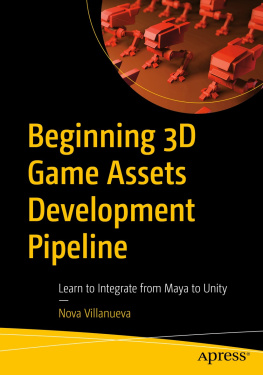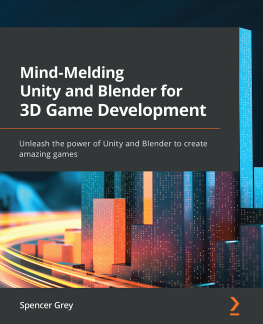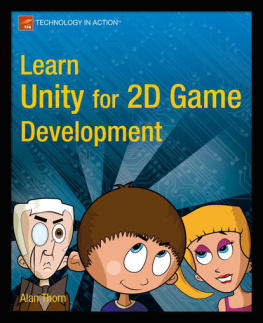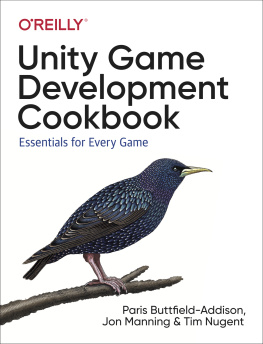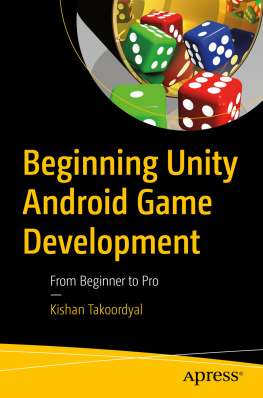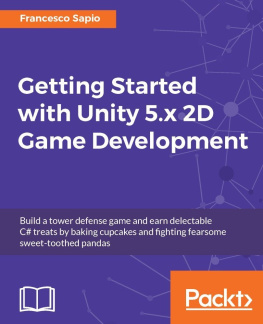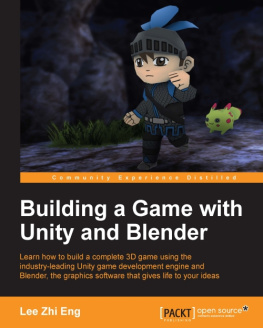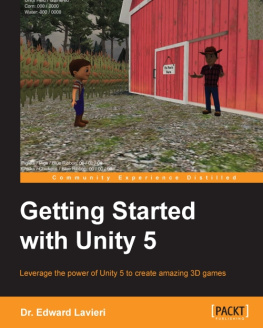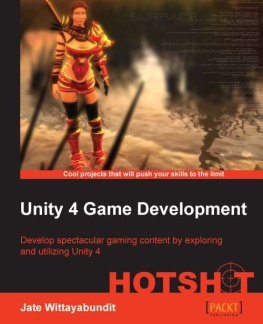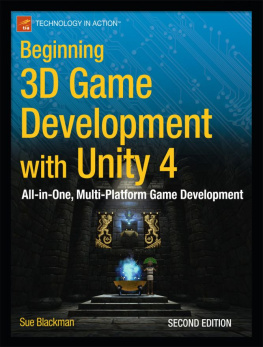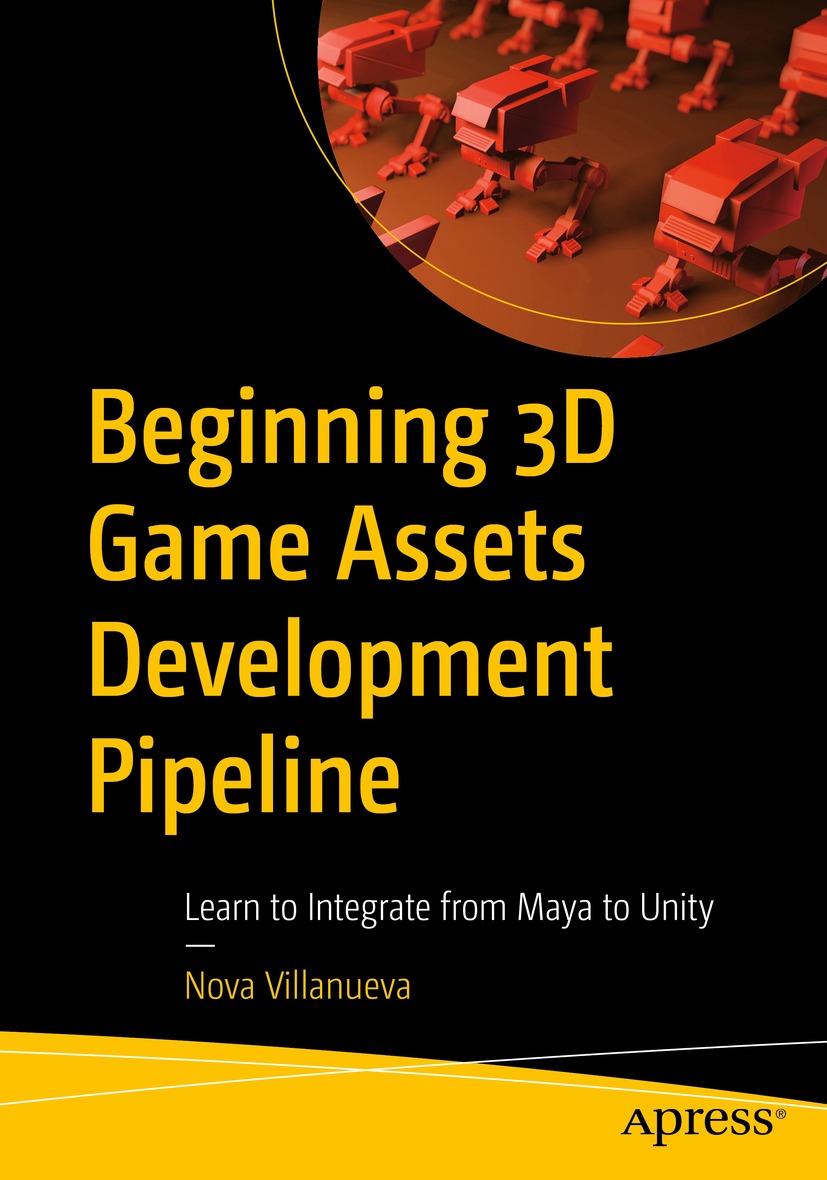Nova Villanueva
Beginning 3D Game Assets Development Pipeline
Learn to Integrate from Maya to Unity

Logo of the publisher
Nova Villanueva
Brooklyn, NY, USA
ISBN 978-1-4842-7195-7 e-ISBN 978-1-4842-7196-4
https://doi.org/10.1007/978-1-4842-7196-4
Nova Villanueva 2022
Standard Apress
Trademarked names, logos, and images may appear in this book. Rather than use a trademark symbol with every occurrence of a trademarked name, logo, or image we use the names, logos, and images only in an editorial fashion and to the benefit of the trademark owner, with no intention of infringement of the trademark. The use in this publication of trade names, trademarks, service marks, and similar terms, even if they are not identified as such, is not to be taken as an expression of opinion as to whether or not they are subject to proprietary rights.
The publisher, the authors and the editors are safe to assume that the advice and information in this book are believed to be true and accurate at the date of publication. Neither the publisher nor the authors or the editors give a warranty, express or implied, with respect to the material contained herein or for any errors or omissions that may have been made. The publisher remains neutral with regard to jurisdictional claims in published maps and institutional affiliations.
This Apress imprint is published by the registered company APress Media, LLC part of Springer Nature.
The registered company address is: 1 New York Plaza, New York, NY 10004, U.S.A.
Dedicado a mi abuela.
Dedicated to my grandma.
Introduction
You look around into a vast open space. It is hard to see through the dense blanket of fog. Suddenly, a loud thump startles you. The noise gets louder as something approaches, closer and closer. A large yellow mech appears in the near distance. As it walks closer to you, you start to see that it is covered in scratches, perhaps battle scars, and various signs of wear and tear appear along its edges. Its long, dark shadow looms over you. You press Escape.
Then, you go and press Play again and look around into a vast open space. It is hard to see through the dense blanket of fog. Silence lingers. A large yellow mech appears in the near distance. As it walks closer, you notice its operation buttons are distorted and its scratches and edge wear are misaligned. It is unclear what material it is even made out of. However, its long dark shadow begins to loom over you. You press Escape.
You press Play again and look around into a vast open space. This time the air is crisp and clear. A large gray mech appears in the distance. It walks in your direction. Its long, dark shadow looms over you. You press Escape.
You press Play again and look around into a vast open space. A small, default game engine character model appears in the distance. It looks as though it is walking in place. Its walking programming is not yet complete. You press Escape.
Now you are back to square one. Where it all began. An idea, a concept, a dream.
With a computer in front of you, a mouse, and a keyboard, you set out to embark on a journey. A journey where you take the tools in your arsenal and learn to build the worlds and characters you imagine, where others can play and experience. For example, a mech roaming through a post-apocalyptic wasteland.
In this scenario, the tools are the skills youll acquire in this book as well as the literal hardware and 3D software tools themselves! Use this book as a guide to help you gain an understanding of industry standard 3D programs. The book will teach you how to create these virtual stories in a production environment.
Maya , Substance 3D Painter , and Unity are massive programs that can take years to master. However, if you keep focused on unleashing your creative self first, the rest will follow. It is not about being an expert designer, nor reaching that alluring master status. Rather, it is about being open to learning, growing, and evolving with software, technology, and your passion for the craft. This will truly help you expand your skillset as a successful 3D artist.
Any source code or other supplementary material referenced by the author in this book is available to readers on GitHub via the books product page, located at www.apress.com/978-1-4842-7195-7. For more detailed information, please visit http://www.apress.com/source-code.
Acknowledgments
Im eternally grateful to Natalie Asport, an AAA 3D artist and NYU professor. Without her joining me to finish this book, it wouldnt have been completed until 2077. Her second voice was what this book needed.
Secondly, special thanks to my long-time supportive friend Flo.
To Frank Lantz, Naomi Clark, Eric Zimmerman, and Bennett Foddy, professors at the NYU Game Center, who enriched my game-design process with iterative design thinking tools while I was a graduate student there. These legendary four colleagues have inspired me and will continue to do so.
This book was completely written through the pandemic, so I also need to thank my doctor, Dr.Oksana Levieva. She treated me even when regular doctor visits outside of COVID symptoms were sparse, which I greatly appreciate.
Lastly, I want to thank Delano Athias, an instructor at Pluralsight, who taught me over a decade topics from rigging to Unity. Back then, the company was called Digital Tutors and I bought their CDs. Delano taught me to see beyond memorizing tutorials and taught me in-depth tools that I can utilize to create anything.
Table of Contents
About the Author
Nova Villanueva
is a professor of game design at the Pratt Institute in New York. She has taught game development for more than five years at Pratt, Parsons, and New Yorks College of Technology, and is an independent game developer working on The Mills game. She live streams her game development process at twitch.tv/novavillan . Nova previously worked as a 3D artist for Animatic Media, as a 2D artist for the Webby award-winning Mafia Wars game developed by Zynga, and is a published artist featured in Photoshop Creative magazine.
She has an MFA in game design from the NYU Game Center in New York and a BS in media arts and animation from the Art Institute of Fort Lauderdale, Florida. You can visit her website at novavillanueva.com to learn more about her work.
About the Contributor
Natalie Asport
worked as a 3D environment artist, character artist, medical artist, and as a hard surface artist creating vehicles and weapons for AAA video game titles such as Just Cause 3, Just Cause 4, and RAGE 2. In addition to her real-world game industry experience, Natalie earned her bachelors degree in Computer Science from Full Sail University in Orlando, Florida.
Currently, she works as a vehicles and weapons artist at Avalanche Studios in New York. She also teaches 3D modeling for games at the NYU Game Center.
You can visit her website at natalieasport.com to learn more about her work.
Natalie Asport started working on the book as a technical editor; however, she took on work that was beyond that of a reviewer and became a second voice for this book. She has been a great contributing author to this book and is a major reason for the book being available in its present form.

